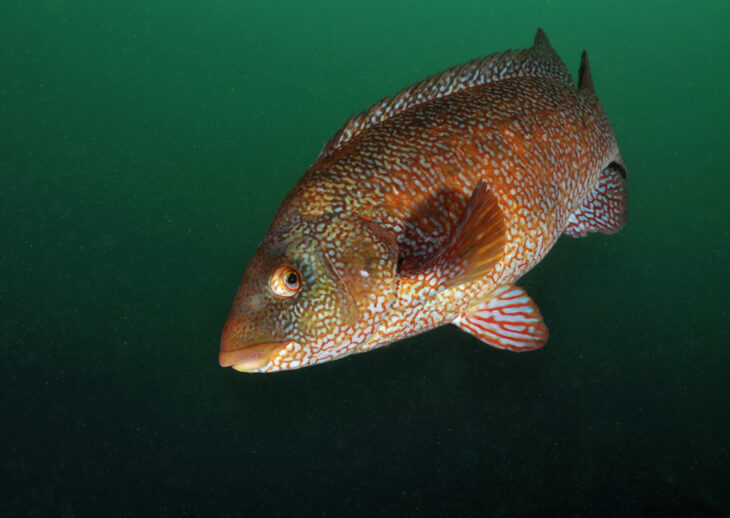A new snorkel trail featuring some of Berwickshire’s most beautiful bays and beaches will be launched in Eyemouth on Thursday 25 July during the annual Herring Queen Festival.
The self-led trail identifies areas for beginner and advanced snorkellers to explore within the Berwickshire Marine Reserve, which covers eight kilometres of coastline between St Abbs Head and Eyemouth. The five sites featured include Eyemouth Beach and Coldingham Bay.

Noel Hawkins, Living Seas Community Manager, Scottish Wildlife Trust said: “As part of our Living Seas programme we are trying to raise awareness of snorkelling as an activity in Scotland. People often associate it with exotic locations like the Caribbean, but Scotland’s seas have just as much to offer, even if they are a few degrees colder.
“It’s been great to work with the passionate team who run the Berwickshire Marine Reserve and to develop the east coast’s first snorkel trail. This is a very beautiful stretch of coastline and getting under the water reveals an impressive range of species.”
Lyle Boyle, Berwickshire Marine Reserve Ranger said: “This new trail is designed to open people’s eyes to the rich range of life that can be found below the surface of the North Sea. Our coastal waters hold great wonders and by providing new ways for people to explore them we hope to raise awareness of the importance of the marine reserve.”
Paul Wheelhouse, MSP for South Scotland, said: “Scotland’s waters and coastline are world renowned for their wildlife and scenery, and this is a key reason for many people to visit the Berwickshire coast.
“Marine and coastal tourism is a key priority for the Scottish Government and the Year of Scotland’s Coast and Waters will be celebrated in 2020. In advance of that, this innovative idea of creating a snorkel trail offers locals and visitors alike a completely new viewpoint to experience what amazing places like St Abbs and Coldingham have to offer under the waves and the area has tremendous infrastructure to support divers wishing to see the wonderful marine habitats along our coast.”

The Berwickshire Marine Reserve was created in 1984 to conserve and protect the rich marine life of the area and promote responsible recreational use alongside a sustainable commercial fishery. The area is a hotspot for Scottish snorkelling and SCUBA diving, and supports a thriving commercial crab and lobster fishery.
The Berwickshire Snorkel Trail is the third of its kind in Scotland. It has been developed in partnership by the Scottish Wildlife Trust and Berwickshire Marine Reserve as part of the Scottish Wildlife Trust’s Living Seas programme, which is supported by the Esmée Fairbairn Foundation.
For more information about the trail, click here.
The five sites on the Berwickshire Snorkel Trail
Starney Bay
This beautiful beach is part of St Abbs Head Nature Reserve. Rich kelp beds and rocky reefs are home to colourful ballan wrasse, leopard-spotted gobies and an array of anemone species. The central section is perfect for beginners, while rocky outcrops offer more advanced snorkelling.
Coldingham Bay
An easily accessible beach perfect for a family day out. The central sandy section is a great spot for first time snorkelling. For more experienced snorkellers, the rocky shores fringing the bay teem with life, from seaweed, anemones and urchins to butterfish, gobies and scorpionfish.
Weasel Loch
This sheltered bay offers advanced snorkelers the chance to explore a range of habitats. Velvet swimming crabs and two-spotted gobies frequent the kelp forests, sea hares feed among the red seaweed, and cuttlefish hover above the sandy bottom.
Milldown Bay
A small and secluded shingle bay offering fantastic advanced snorkelling. Cracks and crevices provide homes for urchins, anemones and edible crabs, and kelp beds provide shelter for juvenile fish including saithe, butterfish and scorpionfish.
Eyemouth Beach
Easily accessible and perfect for first-time snorkelers. Rockier outcrops to the north offer advanced snorkellers the chance to spot crabs and squat lobsters in the submerged rock pools, and seaweed gives shelter for many fish species.
